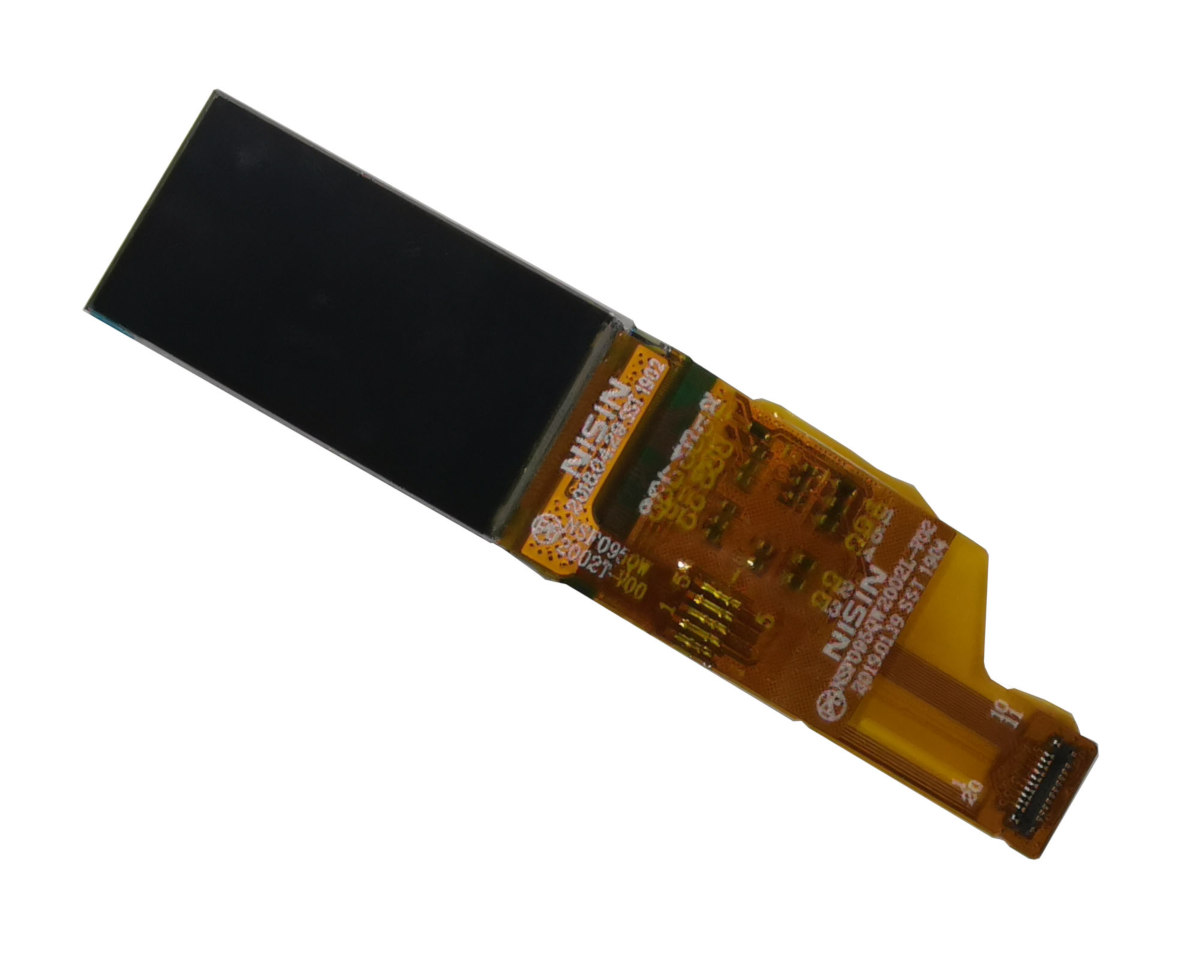Wearable OLEDs - Introduction and Latest Industry News - Page 7
PlayNitride shows advanced flexible and transparent Micro-LED displays
PlayNitride demonstrated its latest Micro-LED displays at SID DisplayWeek 2019 - a 7.56" 720x480 (114 PPI) transparent MicroLED, a flexible Micro-LED on a polyimide substrate and a high-brightness, high-resolution passive matrix MicroLED aimed towards wearable applications.
PlayNitride aims to release its first Micro-LED display products by the end of 2019. In 2017 the company started to sample micro-LED panels and shipped samples to 10-20 potential customers.
DSCC: smartwatch OLED display shipments to grow 28% in 2019
DSCC says that shipments of smartwatch OLED displays grew 124% in the first quarter of 2019, and the company expects yearly shipments to grow 28% in 2019 to reach 63.9 million units.

Even though each single display is small (around 1.4-inch), smartwatches are the third largest OLED application in terms of revenues (after smartphones and TVs) and total revenues will reach $1.5 billion in 2019.
Huawei says it shipped over 2 million Watch GT smartwatches
Huawei launched its Watch GT smartwatch in October 2018, and the company announced it shipped over 2 million units so far. This is great news for Huawei - although its not clear how the recent US ban on Huawei will effect future sales.

The Watch GT has a 1.39" 454x454 round AMOLED display (likely made by AU Optronics) and features an optical 6-LED heart rate sensor, a GPS and a power-saving algorithm that allows the Watch GT to have a claimed 2-week battery life for frequent use mode. The Watch GT is now shipping starting at $199.99 (note: affiliate link to Amazon).
Louis Vuitton demonstrates a handbag with two flexible OLED screens
Fashion house Louis Vuitton demonstrated a bag with two flexible OLED displays (calling it a "Canvas Display") at the company's "Cruise 2020" show in New York earlier this week:
This is not the first Louis Vuitton OLED design - in 2017 it launched the Tambour Horizon, an Android Wear smartwatch that featured a 1.4" 390x390 round AMOLED . In 2019 the device was updated with a smaller 1.3" display.
Microdisplay Technologies for AR and HUDs
The following is a guest article, by Assaf Levy-Beeri, Co-founder at Joya Team
MicroDisplays are used in a variety of applications. First introduced into the market in the 90s, microdisplays were used as an image source for Rear Projection TVs (RPTVs), projectors, viewfinders for digital cameras and Helmet Mounted Display systems (HMDs).
Today, while the demand for wearable products is increasing and the potential wearable market size is very high, microdisplay market is expected to grow dramatically. Augmented Reality (AR) and smart glasses, Helmet Mounted Displays , Virtual Reality (VR) systems and Head-Up Display (HUD) systems are the main applications where a high-resolution microdisplay is required. Correspondingly, the technology is improving all the time and microdisplays manufacturers make significant investments in order to improve their technology and products performances. In addition, new technologies and manufacturers enter this field.
We now list a new 0.95" 120x240 BOE AMOLED display at the OLED Marketplace
We have added a new OLED panel to the OLED Marketplace, a BOE 0.95" 120x240 AMOLED that has a 4-Wire SPI interface and an embedded touch layer.

These new small AMOLED displays can be great for many applications - such as wearable or industrial devices. Check out more information over at the OLED Marketplace, or contact us now.
The foldable Nubia Alpha smartband is now shipping in China
In September 2019 Nubia unveiled the Alpha - smartband that turns into a smartphone - with a foldable OLED display. Nubia said it will launch its Alpha foldable smartband by the end of 2018, but later updated the launch date to April 2019.
Nubia has started to accept pre-orders for the Alpha which will start shipping tomorrow in China only for now - for 3499 Yuan (around $520). The first device to ship is the Bluetooth variant - and Nubia plans to release an eSim variant which will cost around $625 and will launch in Q3 2019.
IHS: smartwatch display shipped soared from 9.4 million units in 2014 to almost 150 million in 2018
IHS says that recent years have seen a drastic growth in smartwatch shipments - the market grew from 9.4 million units in 2014 to 149 million units in 2018. In just one year, shipments grew 42% from 2017 to 2018.

This rising demand for smartwatches has of course created a rising demand for displays. OLED displays are leading this segment - with around 80% of shipments in 2018 (the rest are mostly LCD displays). AMOLED display shipments were around 42 million and PMOLED shipments reached around 75 million.
Reuters: Japan Display to supply Apple with OLED screens for its 2019 smartwatch
According to Reuters Japan Display has signed a deal with Apple to supply OLED screens for Apple's 2019 Watch device. Reuters gets its information from "two sources familiar with the matter".
Apple's 2018 Watch Series 4 uses a 1.57" 394x324 LTPO AMOLED display (1.78" 448x368 on the larger 44mm version). Apple's current exclusive smartwatch display supplier is LG Display.
LG to brand its CSO OLED as Display Speaker
Last month LG Electronics announced its G8 ThinQ with its 6.1" 1440x3120 Crystal Sound OLED. According to a new trademark filing, LG now aims to brand its CSO OLEDs as "Display Speaker".

A Crystal Sound OLED, or Display Speaker turns the flexible OLED display into high end speakers. This innovating OLED technology works for smartphones, TVs and also OLED lighting panels. In LG's trademark filing, it also hints that this technology will be used in future wearable displays.
Pagination
- Previous page
- Page 7
- Next page



